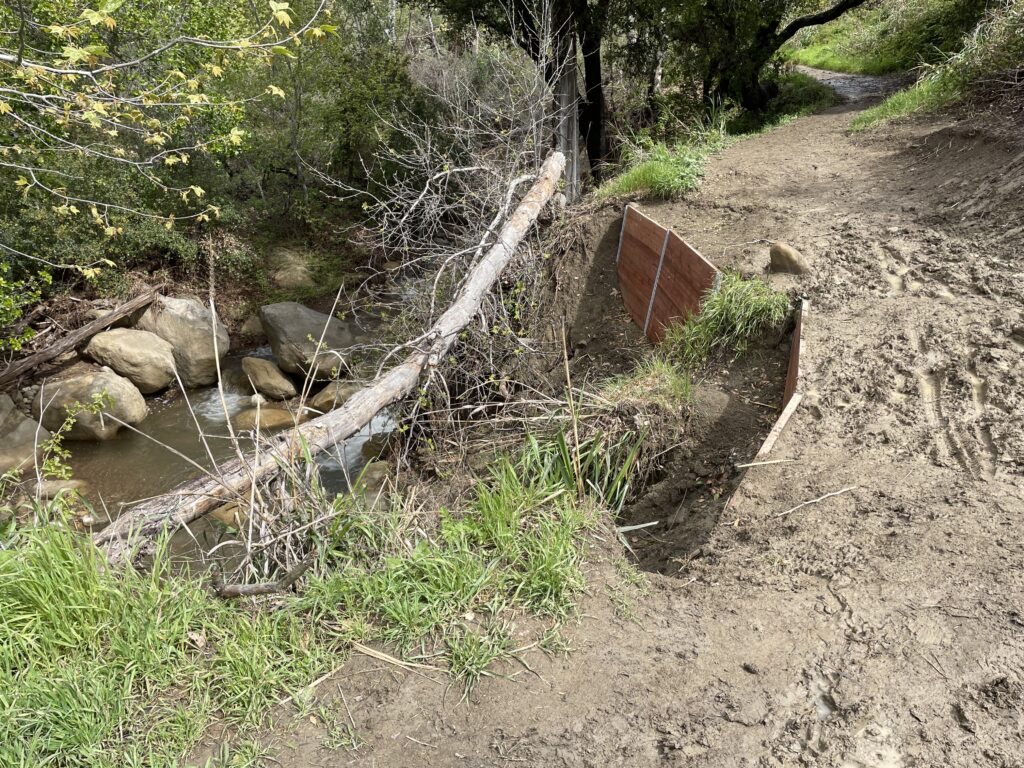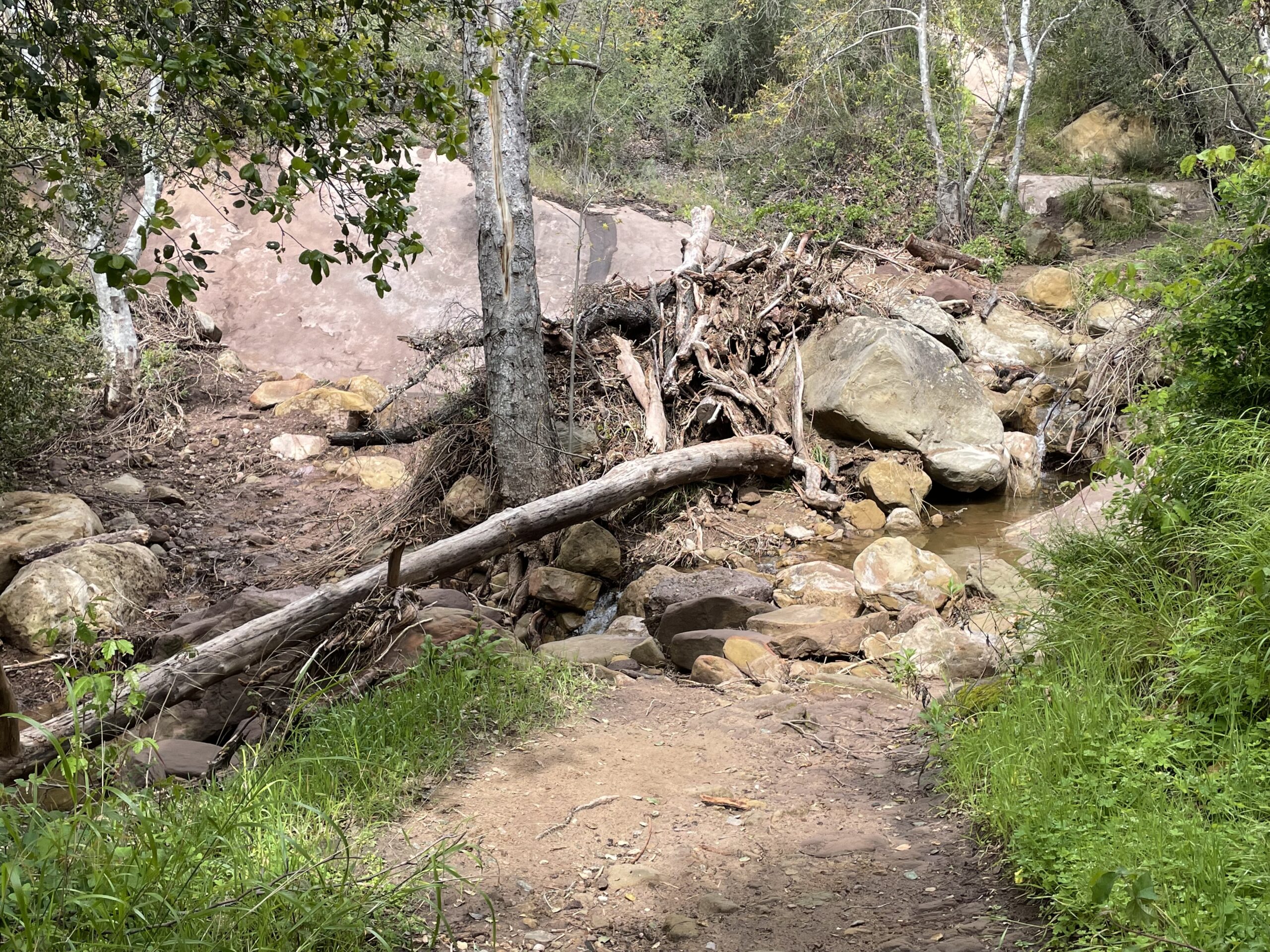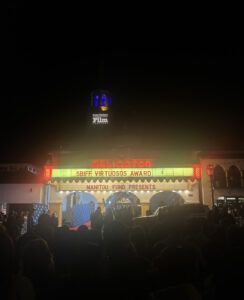With its high mountains, beautiful oceans, and over ninety separate hiking trails, Santa Barbara is a hiking destination for tourists and locals alike. But when an atmospheric river of rain and snow comes into town, these same trails become impassable rivers full of dirt and debris. Normally, these trails offer an exemplary way to view the environment, allowing hikers to enjoy the natural beauty of the area, see all kinds of plants and animals, talk with friends or family, or simply go running for some exercise. Too much rain, however, can lead to the destruction of these pristine community areas.
Creeks and streams form when water from higher areas (in our case the mountains) gets pulled toward lower areas by gravity. Water leaks out of the soil and forms trickles, which slowly combine in the foothills to form streams, which will eventually lead to the ocean. What happens when the soil gets too saturated? Instead of being held in the soil, water can rush down the mountains and overflow the streams that were there previously. This causes erosion, and damage to our waterways, and most importantly, our trails.
A good number of trails in Santa Barbara follow streams up the foothills and into the mountains, and these can easily get washed out by a heavy rainfall. If the rain is bad enough, entire sections of trails can disappear overnight, having to be repaired or rerouted after the storm is over. I had the opportunity to visit one of these sites after the storm on the 28th, and the damage was worse than one might think.
On the North Jesusita Trail, damage was almost immediately noticeable: a slippery mud walkway constituted the only path down to the trail. The hillside, and therefore the trail, is made almost entirely out of clay. Clay only becomes malleable when wet, so when the trail dries the footprints and skid marks will harden into an uneven surface uncomfortable to walk on. Farther down the trail, large landslides scarred the hill on the right of me, requiring a scramble to get across. The farther up the trail I got, the more destruction there appeared to be. The trail repair crews had yet to come up this far. Parts of the trail had already been addressed, landslides shored up, and boulder nets thrown onto the hills above.

I talked to Abe Powell, CEO of the non-profit organization The Santa Barbara Bucket Brigade, about his group’s efforts to repair trails damaged in the recent storm. “We’re going to sandbag some of our trails, force some drainage, prevent water from going in certain places, preserve what we have,” Powell commented on the work the Bucket Brigade is doing to maintain their trails. The Bucket Brigade does a variety of community service projects, and part of that work is building trails that help “restore pedestrian and community access.” Even though the Bucket Brigade mainly constructs new trails in neighborhoods, their paths still face the same threat mountain trails do. Fixing erosion, however, is no easy task, and in order to “solve harder problems,” collaboration is the perfect solution. Powell described a project he was starting with the Sage Trail Alliance the next day. “Together we’re going to go up and build…a bioswale to help deal with trail erosion that’s damaging [Elings] park.” (A bioswale is a vegetated depression in the landscape designed to drain water.) In fact, the Bucket Brigade often works with other organizations to restore, create, and preserve trails.
After the storms in January, the Montecito Trail Foundation asked the Bucket Brigade to assist with a trail that had been completely destroyed by the downpour. “In one area, there was no dirt, there was nothing. The trail was gone, it was just [a] creek now,” Powell noted, “they needed us to build the platform to build the trail on…they don’t have heavy equipment at Montecito Trails, but we do at Bucket Brigade.” However, construction is only the beginning. “The thing about trails, especially mountain trails, is that you’re never done. It’s a constant process of maintenance.” After a trail has been washed out, we can sit and do nothing, or we can rebuild, and in the process make a better community space than what was there before. One place to start is with the Bucket Brigade.
The Bucket Brigade was founded five years ago during the Montecito mudslides. It was a coalition of neighbors working together to dig themselves out, and repair damage caused by the mud. Since then, they’ve worked on a number of projects, such as pedestrian accessibility, fire recovery, community gardens, and trail repair. If you would like to learn more, or participate in the Bucket Brigade’s amazing work, head to their website at “sbbucketbrigade.org”. The Bucket Brigade also hosts the Bucket Brigade Academy during the summer for highschool students looking for leadership opportunities in our outdoor community. Their admissions open on March 20th, and they’re only accepting eighty students! Their mission statement is: “Through hands-on volunteer deployments and positive leadership education, Bucket Brigade Academy teaches students how to organize, train and deploy volunteers in response to natural disasters and community crises.”
[Image Credit: Cole Weaver]





Be First to Comment